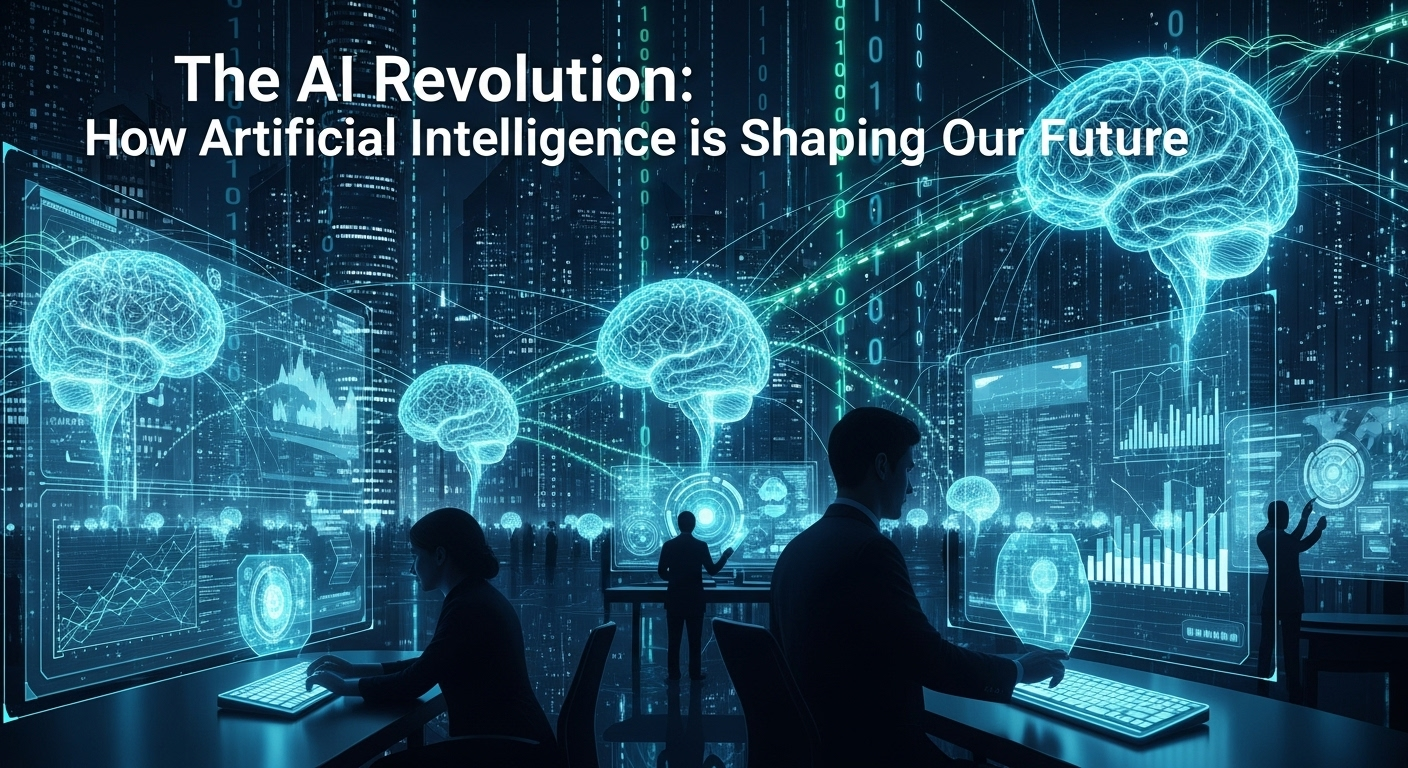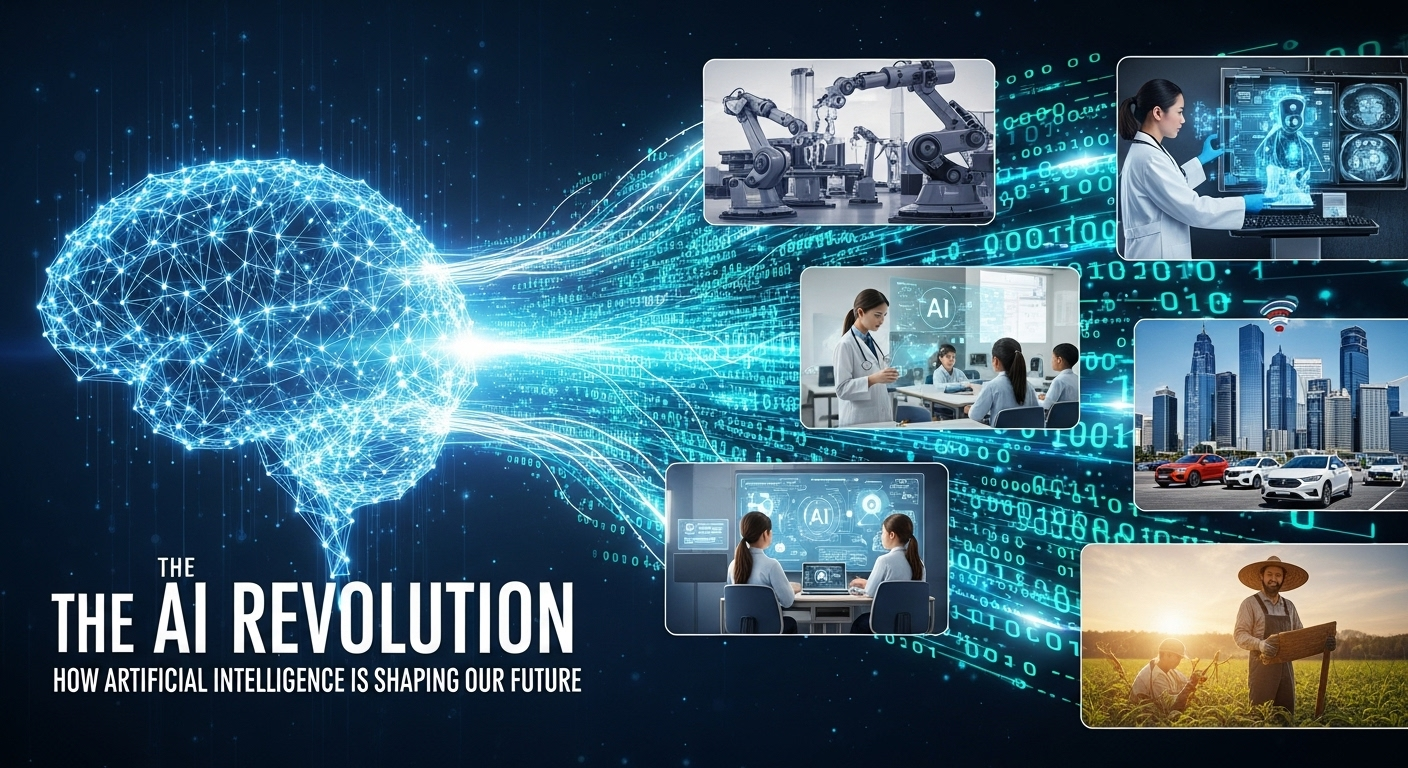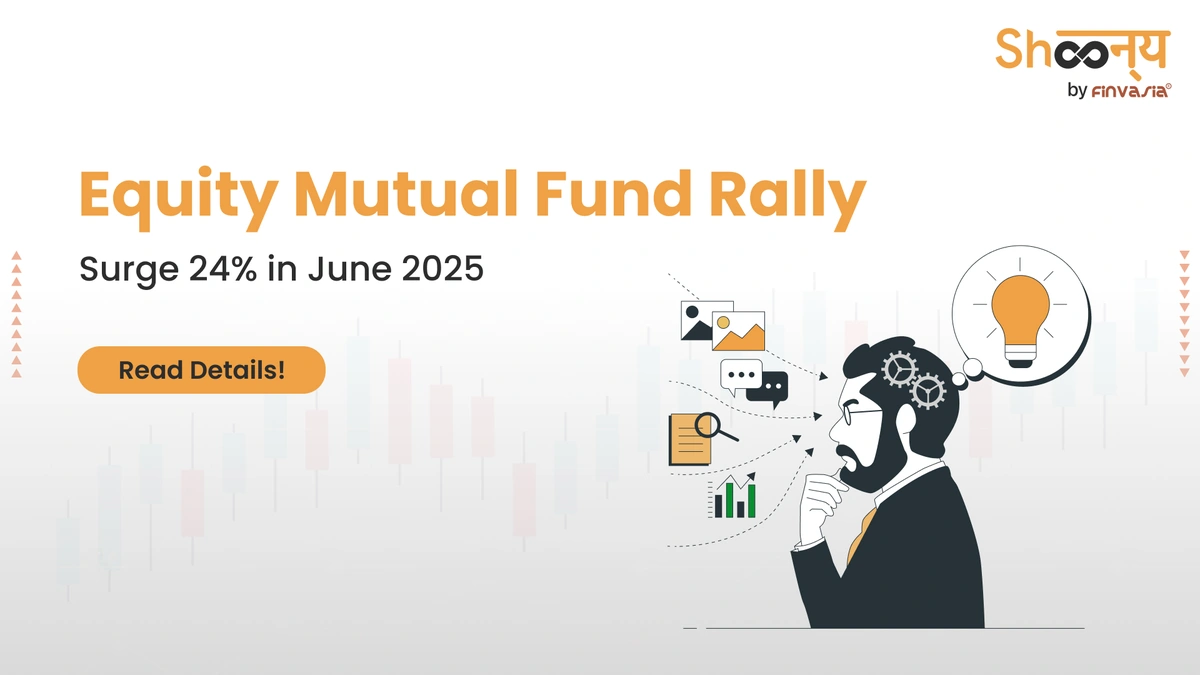Ever feel like you’re living in a sci-fi movie? I do, almost daily. And not in that dramatic, robots-taking-over kind of way (though, who knows?). It’s more subtle. It’s in the way my phone knows what I want before I do, the way algorithms curate my newsfeed, or even how I can now have pretty intelligent conversations with a chatbot. This, my friends, is the AI revolution, and it’s not some distant future—it’s now.
I remember when the term ‘artificial intelligence’ sounded like something out of a dusty textbook, a concept relegated to research labs and academic papers. Now? It’s woven into the very fabric of our lives, from the mundane to the monumental. And it’s only going to get more pervasive. It’s a bit like the internet in the early 90s – a simmering undercurrent that’s about to explode into the mainstream. But what does it all mean? Let’s dive in, shall we?
AI in Everyday Life: More Than Meets the Eye

We often think of AI as sentient robots or self-driving cars (and those are definitely part of the picture). But the truth is, AI is already deeply embedded in our daily routines, often without us even realizing it. Think about your favorite streaming service – the one that always seems to know exactly what shows you’ll binge-watch next. That’s AI at work, analyzing your viewing habits and suggesting content based on complex algorithms. It’s kind of creepy, but also undeniably convenient.
And it’s not just entertainment. AI is transforming industries across the board. In healthcare, AI-powered diagnostic tools are helping doctors detect diseases earlier and more accurately. In finance, algorithms are used to detect fraud and manage risk. In manufacturing, robots are automating tasks and increasing efficiency. Seriously, the applications are endless. But is it all sunshine and roses? Of course not. The ethical considerations are huge – bias in algorithms, job displacement, and the potential for misuse are all very real concerns that we need to address head-on.
The AI-Driven Workplace: A New Era of Productivity (and Anxiety?)
Here’s the thing: the workplace is changing. Dramatically. And AI is a major catalyst. We’re seeing automation of repetitive tasks, AI-powered assistants that can handle administrative duties, and data analytics tools that provide insights previously unimaginable. All of this leads to increased productivity and efficiency, which is great for businesses. But what about the human workers? Will AI replace us all? That’s the million-dollar question, isn’t it?
I don’t think so, at least not entirely. While AI will undoubtedly automate some jobs, it will also create new ones. Think about the roles needed to develop, implement, and maintain AI systems. We’ll need data scientists, AI engineers, ethicists, and trainers. And, crucially, we’ll still need humans to provide the critical thinking, creativity, and emotional intelligence that AI simply can’t replicate. It’s about humans and AI working together, not humans versus AI. At least, that’s the ideal scenario.
But, let’s be honest, the transition won’t be easy. There will be challenges, and we need to prepare the workforce for these changes through education and training programs. According to a recent study, reskilling initiatives are crucial for navigating the future of work, ensuring that workers can adapt to the evolving demands of the AI-driven economy. It’s an investment in our collective future.
Ethical Considerations: Navigating the Moral Maze of AI
The more powerful AI becomes, the more important it is to address the ethical implications. And I’ve got to admit, this part fascinates me. We’re talking about algorithms that make decisions that can have a profound impact on people’s lives. Who decides what’s fair? Who’s accountable when things go wrong?
Bias in AI is a major concern. If the data used to train an AI system reflects existing biases, the system will perpetuate those biases, potentially leading to discriminatory outcomes. Think about facial recognition technology that’s less accurate for people of color, or loan applications that are unfairly denied based on biased algorithms. These are not hypothetical scenarios; they’re real-world problems that we need to address proactively.
Then there’s the question of transparency. How do we ensure that AI systems are understandable and explainable? If an algorithm makes a decision, we need to know why it made that decision. This is especially important in areas like healthcare and law, where people’s lives are at stake. We need to develop ethical frameworks and regulations that guide the development and deployment of AI, ensuring that it’s used for good and not for harm. It’s a tricky balance, this – encouraging innovation while safeguarding against potential risks.
Remember all the discussion about JNVST Class 6th Result 2025? Well, think about applying AI to educational outcomes – what if an AI system incorrectly predicted a student’s likelihood of success? The consequences could be devastating.
The Future of AI: Speculation and Possibilities
Okay, let’s indulge in a little speculation. Where is all of this heading? What will the world look like in 10, 20, or 50 years? It’s impossible to say for sure, but I can envision a future where AI is even more deeply integrated into our lives, powering everything from personalized medicine to smart cities to space exploration.
Imagine a world where diseases are diagnosed and treated with pinpoint accuracy, where traffic flows seamlessly and efficiently, where energy is used sustainably, and where we can explore the vast reaches of the universe with the help of intelligent robots. That’s the potential of AI, and it’s incredibly exciting. But it’s also important to remember that technology is a tool, and like any tool, it can be used for good or for ill. The future of AI depends on the choices we make today. Do we prioritize ethical considerations? Do we invest in education and training? Do we ensure that AI benefits everyone, not just a select few?
The AI revolution is here, and it’s up to us to shape it. Let’s embrace the possibilities, address the challenges, and build a future where AI enhances human potential and creates a better world for all. What’s so fascinating is the intersection of art and AI. Who would have thought we could create art and music through artificial intelligence? You might even wonder, could AI become creative on its own? It’s a profound question to ask and that’s RPF Constable Answer Key 2025 for thought.
FAQ: Your Burning Questions About AI, Answered
Will AI take over all the jobs?
That’s the big fear, isn’t it? And it’s understandable. Some jobs will be automated, that’s almost guaranteed. But AI will also create new jobs and, more importantly, it will augment existing jobs. Think of it as a partnership. AI can handle the repetitive, mundane tasks, freeing up humans to focus on more creative, strategic, and people-oriented work. The key is to adapt and reskill.
How do I know if an AI system is biased?
This is tricky! Bias can be subtle and hard to detect. Look for things like skewed data sets, lack of diversity in the development team, or outcomes that disproportionately affect certain groups. Transparency is key. Demand to know how the AI system works and what data it’s trained on. And, crucially, advocate for independent audits and oversight. We need watchdogs to keep AI accountable. Also you can find related content on Wikipedia
What can I do to prepare for The AI Revolution: How Artificial Intelligence is Shaping Our Future?
Learn! Educate yourself about AI, its capabilities, and its limitations. Develop skills that are in demand, such as data analysis, programming, or critical thinking. And, perhaps most importantly, cultivate your uniquely human skills – creativity, empathy, communication. These are the things that AI can’t easily replicate.
Is AI inherently good or bad?
Neither! AI is a tool. Like any tool, it can be used for good or for bad. It’s up to us to ensure that it’s used responsibly and ethically. We need to have open and honest conversations about the potential risks and benefits of AI and to develop policies and regulations that guide its development and deployment.




